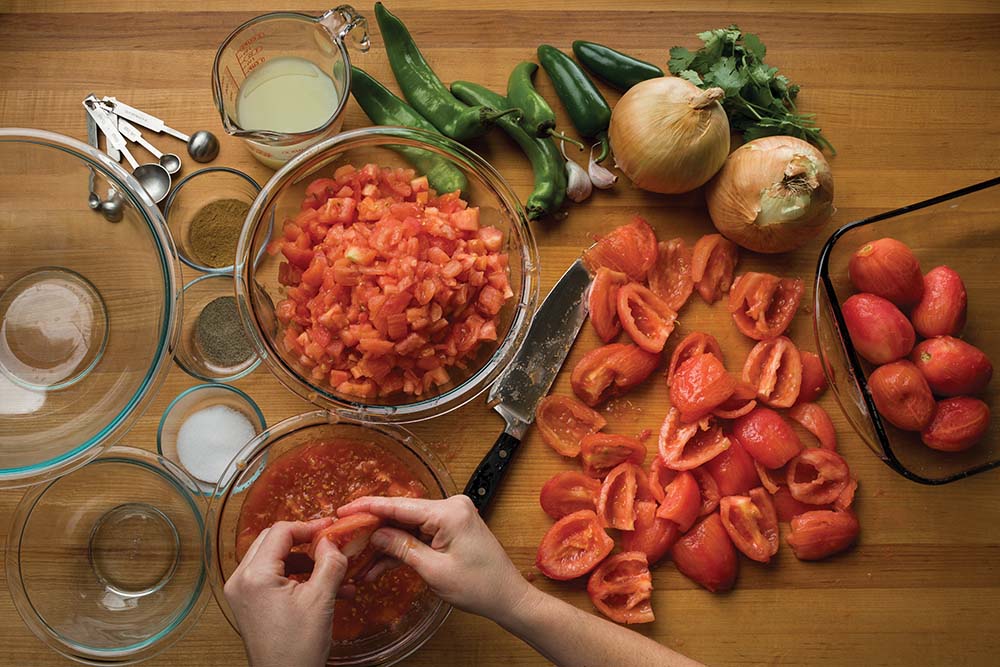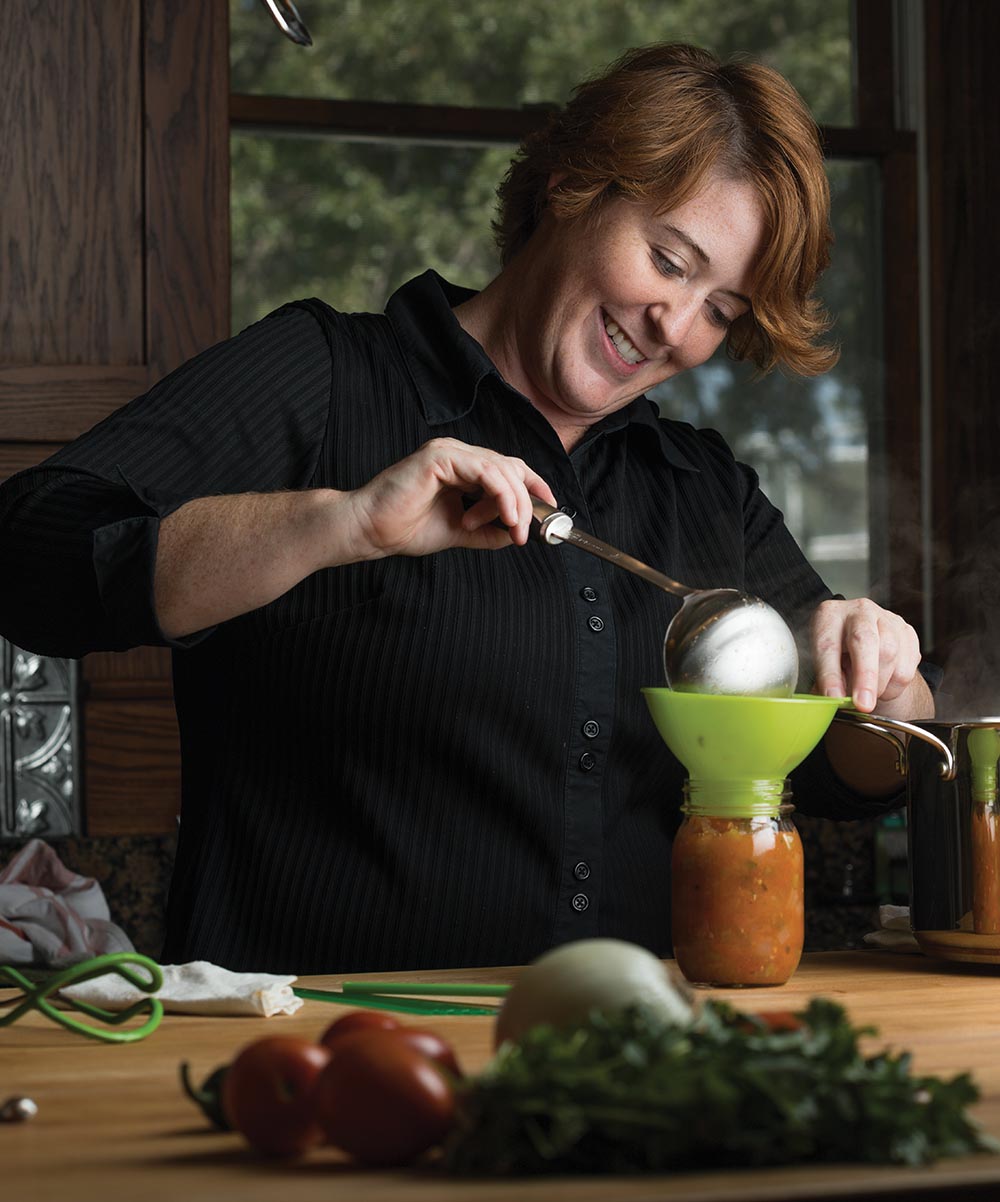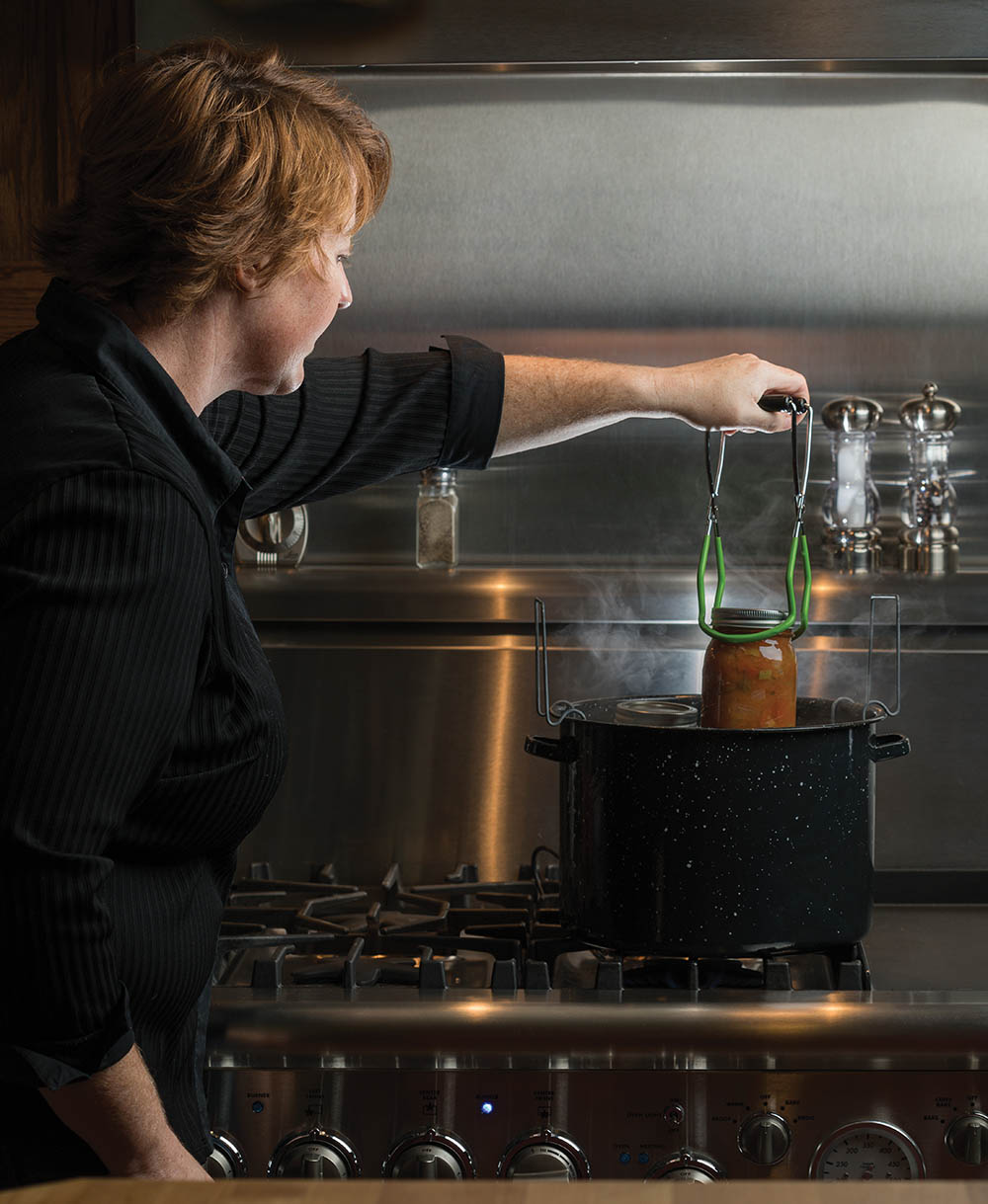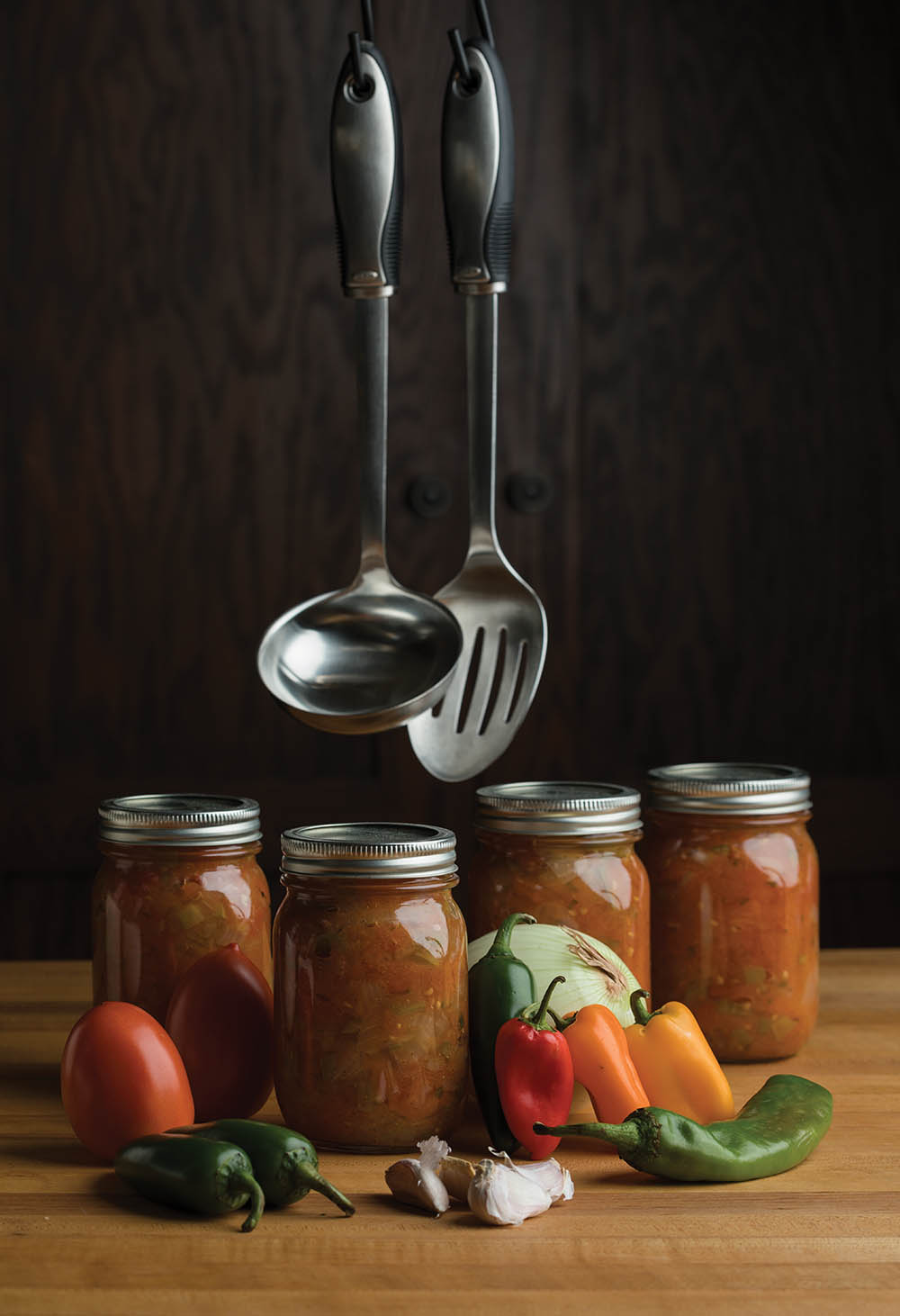You can preserve fresh foods by canning, which uses heat to kill naturally occurring microorganisms. The easiest way to get started is by using the hot water bath method. Use this method to can highly acidic foods (those with a pH lower than 4.6) – including this salsa recipe – without a pressure canner.
Ingredients
- 7 quarts peeled, cored, chopped paste tomatoes (we used Roma)
- 4 cups seeded, chopped long green chiles (we used Anaheim)
- 5 cups chopped onion
- ½ cup seeded, finely chopped jalapeno peppers
- 6 cloves garlic, finely chopped
- 2 cups bottled lemon or lime juice
- 2 tablespoons salt
- 1 tablespoon black pepper
- 2 tablespoons ground cumin (optional)
- 3 tablespoons oregano leaves (optional)
- 2 tablespoons fresh cilantro (optional)
Yields: About 16 to 18 pints

Directions
Step 1
Wash all vegetables under cold water, and chop peppers and garlic. (Note: Wear plastic or rubber gloves and do not touch your face when cutting hot peppers. If you do not wear gloves, wash your hands with soap and water before touching your face or eyes.)
Step 2
Blanch the tomatoes by dipping them in boiling water for about 30 to 60 seconds then immediately transferring them to cold water. Slip the tomato skins off, remove the cores and seeds, and chop the remaining tomato.
Step 3
Wash at least 16-18 canning pint jars. Place clean jars in a large stockpot with enough water to keep jars submerged. In a smaller sauce pan, cover at least 16-18 lids with water. Bring the water in both pots to a simmer (180 degrees F) until you are ready for Step 5.
Step 4
Combine all ingredients except cumin, oregano and cilantro in a large pot. Bring to a boil, stirring frequently. Reduce heat and simmer 10 minutes. Add cumin, oregano and cilantro, and simmer another 20 minutes. Stir occasionally.
Step 5
Pull jars out of the hot water. Pour hot salsa into one or two hot jars at a time. Leave about ½-inch headspace between the food and the top of the jar. Use a plastic (not metal) spatula to release air bubbles in the jar. Slowly turn the jar while moving the spatula up and down the inside of the jar to allow air bubbles to escape. Use a damp paper towel to wipe off the rim of the jar. Place the preheated lid on the jar, and fit the metal screw band over the lid and tighten.
Step 6
Repeat Step 5 until you have a full canner load (this will depend on the size of the pot you use; ours holds about nine jars).
Step 7
Load jars into a boiling water canner or large stockpot filled with water. The water should be at least 1 inch over the top of the lids. Cover with a lid and bring to a rolling boil.
Step 8
Let process (boil) for 15 minutes.
Step 9
Turn off heat and remove lid of the boiling water canner or stockpot. Let jars cool in canner for about 5 minutes, then remove. Space jars evenly with approximately 2 inches of space on all sides. Repeat steps 5 through 9 until you’ve canned all the salsa.
Step 10
Let cool for 12 hours, then test seals. You will hear lids pop while they are cooling and sealing. If, after 12 hours, the lid is not tightly sealed to the jar, it should not be stored unrefrigerated.



This recipe was originally published as part of the U.S. Department of Agriculture’s Complete Guide to Home Canning, 2015 revision. It is important to follow proper procedures when canning to safely preserve food. We recommend reading the guide at National Center for Home Food Preservation. Learn more about food pH and canning from Oklahoma State University.
Other Foods to Hot Bath
Not all foods can safely be canned using the hot bath method. Less acidic foods (pH higher than 4.6) require a pressure canner to achieve hotter temperatures to kill off microorganisms. This is why you should not significantly adjust recipes (such as for salsa) when hot water bath canning. Add too much onion, and you might skew the pH levels.
Here are some other foods you can hot bath.
- Apples
- Cherries
- Grapes
- Peaches
- Pears
- Pineapples
- Plums
- Rhubarb
- Tomatoes
- Pickled Vegetables
Comment
Leave a Reply
6 comment on: "Canning Tomato Salsa Using a Hot Water Bath""


Rayna
June 30, 2023I am trying to print this so I can can this salsa recipe. Sounds delicious!
Cheri
August 31, 2023is it safe if I do not peel the tomatoes using this recipe? I am trying to increase my fiber intake. Also, I have read that most of the nutrients in food are in the peeling. It saves time as well not having to peel the tomatoes.
Elaine Miller
October 10, 2023What do you do if jars don’t seal? Can you repeat the steps again?
Kayla Meier
April 22, 2024I am very excited for garden to bloom, I am saving this recipe to try. Thanks for sharing!
Noble Research Institute
April 22, 2024Happy to share and best of luck with your garden!
Robin
August 28, 2024Thank you for your help with canning today. It has been more than a few years since i have done a hot water bath. I needed a refresher. GREAT INSTRUCTIONS!